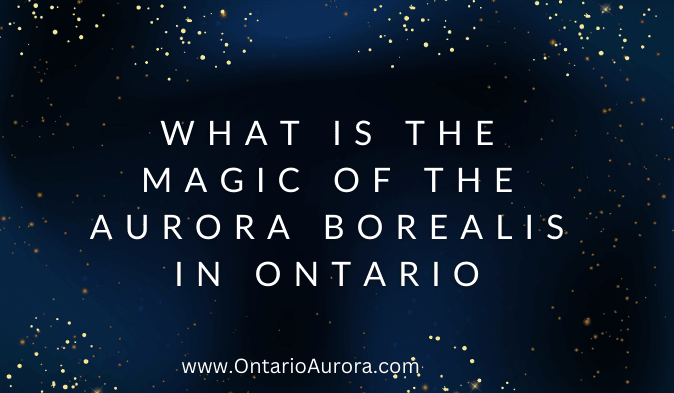
The trip to northern lights, also called the aurora borealis trip, are a beautiful show of lights that can be seen at night in the northern hemisphere. The aurora australis, or “southern lights,” are what people in the southern hemisphere call them.
The northern and southern lights are called aurora polaris, which means “polar lights,” because they happen close to Earth’s magnetic poles.
How auroras form:
The discharge of charged particles (protons and electrons) into space by the Sun is referred to as the solar wind. The solar wind is pushed around Earth by its magnetic field, which is unseen to the naked eye.
The magnetic field lines are pulled and stretched because Earth’s magnetic field keeps us safe from the solar wind. When they snap back, like an elastic band, charged particles are thrown down along the magnetic field lines to the Earth’s surface.
When these charged particles that are thrown out by Earth’s magnetic field hit gases in the upper atmosphere, an aurora forms.
These crashes cause tiny flashes of light that fill the sky with different colours. It works the same way as a neon lamp or an old TV with a cathode ray tube. The auroras look like they are moving or “dancing” in the sky because billions of flashes happen one after the other.
Beginning in August and going through May, you can see the northern lights almost every night. Space is linked to the ground, which is why we can see auroras in northern Canada.
Magnetic fields connect Earth’s north and south ends to the part of space where most of the “dragging, stretching, and snapping” takes place. Earth’s magnetic field lines make two ovals of aurora around the North and South Poles. This is how the magnetic field is shaped.
Around the Earth the magnetic field is spread over many thousands of miles around the Earth. So:
- The spring and fall equinoxes are the best times to see auroras.
- It is easier to see them in the winter than in the summer because the sky is darker in the winter.
Also, the more active the Sun is:
- The more stunning the auroras will look on Earth,
- The further south that the oval positioned above northern Canada will stretch
When the aurora is active, people all over Canada and some parts of the US can see it! The oval returns to its normal position when solar activity goes down, and the auroras weaken.
A coronal mass ejection, or CME, is a huge blast of plasma and magnetic field from the Sun’s outer atmosphere. This video shows how a CME moves from the Sun to Earth’s magnetosphere. The polar lights are made when the magnetic field lines meet up again behind the Earth.
An interesting colour event:
The northern lights are different shades of green, red, and blue.
The Northern Lights’ colours:
Several things affect the colours of the Northern Lights:
- What gases are in the Earth’s atmosphere
- The height at which the aurora appears,
- The density of the air, and
- The amount of energy involved
The Northern Lights can be beautiful!
When electrons hit nitrogen in the air, they make the bright pink edge on the bottom edge of the aurora. (Thanks to Astronomy North, the University of Calgary, and the Canadian Space Agency)
The northern lights happen most of the time between 100 and 300 km above the ground, but they can happen up to 600 km above the ground too.
When the northern lights are out, you can see the following colours.
- Green: The most common colour seen from the ground is green, which is made when charged particles hit oxygen molecules at 100 to 300 km above the ground.
- Colours pink and dark red: Sometimes, nitrogen molecules at heights of about 100 km will make the bottom edge of an aurora look pink or dark red.
- Red: Auroras that are red are caused by clashes with oxygen atoms higher in the atmosphere, between 300 and 400 km.
- Last but not least, hydrogen and helium molecules can make blue and purple auroras. However, seeing these colours against the night sky can be hard.
Aurora viewing tips
You don’t need any special equipment to see auroras, just a good dose of enthusiasm!
Canada’s northern towns are treated to regular aurora borealis displays because they are located under the auroral oval.
Viewing the northern lights
The closer you are to the North Magnetic Pole, the better your chances of being able to enjoy the northern lights. That said, they can also be seen in more southerly parts of Canada during times of intense solar activity. You can also explore Charm of Aurora, Ontario.
The aurora usually shows up a few hours after sunset, when the sky is clear, and gets brighter around midnight. You can see the northern lights if you’re lucky. Here are some tips to make the most of your viewing night.
The place
Pick a place that doesn’t have a lot of light pollution. Low-intensity auroras can’t be seen because of the bright city lights that light up the sky.
Conditions for viewing
- Please look at the aurora predictions to see if you can see the northern lights where you are.
- To find out what Canada thinks about geomagnetic activity, which is what causes the aurora borealis, go to Space Weather Canada.
- Before you leave, check the neighbourhood weather report. It’s hard to see the aurora when there are clouds, rain, or a full Moon.
- Auroras can show up anywhere in the sky, not just north.
- You can see where the auroral circle is right now. It gets cold at night, so make sure to dress up!
- When you go to see the aurora, don’t forget to bring your camera.
Frequently Asked Questions (FAQs) about Aurora Borealis Trip:
Q1: What are the northern lights, and why are they called aurora borealis?
A1: The northern lights, also known as aurora borealis, are a stunning display of lights that occur in the night sky in the northern hemisphere. They are named aurora borealis because they are predominantly visible in the northern regions of the Earth.
Q2: What causes the formation of auroras?
A2: Auroras are formed when charged particles, such as protons and electrons, discharged by the Sun (solar wind), interact with Earth’s magnetic field. These charged particles are directed towards the Earth’s surface, leading to collisions with gases in the upper atmosphere and the creation of colorful light displays.
Q3: Are there southern lights as well?
A3: Yes, the southern hemisphere experiences a similar phenomenon known as the aurora australis, or “southern lights.”
Q4: When is the best time to witness the northern lights?
A4: The northern lights are most visible from August to May, and the spring and fall equinoxes are considered the optimal times. You will enjoy and feel amazed after viewing northern lights. They are easier to see in the winter due to darker skies.
Q5: What factors influence the colors of the northern lights?
A5: The colors of the northern lights are influenced by factors such as the gases in Earth’s atmosphere, the height at which the aurora appears, air density, and the amount of energy involved. Different gases and altitudes result in various colors, including green, pink, red, and blue.
Q6: Can the northern lights be seen anywhere in the sky?
A6: Yes, auroras can appear anywhere in the sky, not just in the north. The auroral circle, where they are most likely to be seen, varies, and it is advisable to pick a location with minimal light pollution.
Q7: What is a coronal mass ejection (CME) and its role in aurora formation?
A7: A coronal mass ejection is a massive release of plasma and magnetic field from the Sun’s outer atmosphere. When the magnetic field lines reconnect behind the Earth, it contributes to the creation of the northern lights.
Q8: How can I increase my chances of seeing the northern lights?
A8: Choose a location with low light pollution, check aurora predictions, monitor geomagnetic activity, and ensure clear skies. Dress warmly, as auroras are often visible in cold conditions.
Q9: Do I need special equipment to view the auroras?
A9: No special equipment is required; enthusiasm is key. However, bringing a camera is recommended to capture the breathtaking display.
Q10: Can the auroras be seen in southern parts of Canada?
A10: Yes, during times of intense solar activity, the northern lights can be visible in more southerly parts of Canada. Checking Space Weather Canada for geomagnetic activity predictions is advisable.
RELATED POSTS
View all



